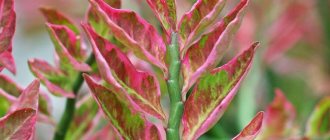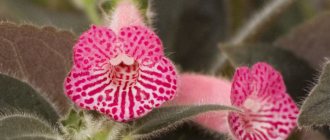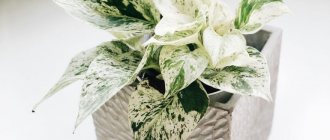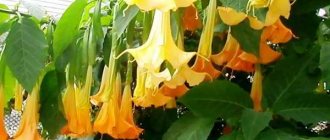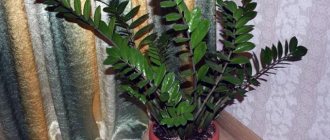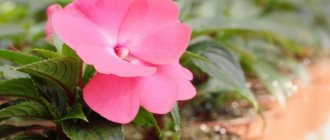Want a filter, decoration and source of positive energy in your home? Palma Howea is at your service!
If there are exotic indoor plants that look good in any interior, it is undoubtedly the palm tree.
And how could it be otherwise: they bring the aroma of tropical beaches, the warmth of sunny deserts and the feeling of traveling to our long, cold winters, biting winds and gloomy, dreary days. And you can get all this without leaving your home.
One of the most beautiful, eye-catching and therefore often found palm trees in modern design is the Howea.
Botanical description
The chic Howea hails from Australia's volcanic islands, particularly Lord Howe Island, which is world famous for its soft sandy beaches and unforgettable surf. This thrifty plant prefers basalt rocks and coastal hills and is very hardy: it grows in apartments and offices as well as on balconies, sometimes reaching 15 meters in height! But such giants can only be seen in nature: domestic palm trees are much more modest and do not exceed 3 m in height.
The Howea palm is a real miracle of nature - it can bloom! Picture this image: thin, ascending stems bearing numerous round balls of a warm yellow hue - just like mimosa. But even this, unfortunately, can only be seen in the wild and occasionally in greenhouses.
The photo below shows howea in bloom:
Howea is a monoecious palm. It forms many stems at the top. The stems are covered with leaves - large, pinnately divided and brightly colored. Young plants growing indoors develop many root stems, but over time a single, very strong trunk is formed. It differs from its “relatives” in its slow growth: in a year it is capable of producing only 2, maximum 3 new leaves. But it lives a long time, for two or even three decades. Provided, of course, good care.
By the way, one of the industries of tiny Lord Howe is the export of seeds of this particular palm tree.
Beneficial features
Howea indoors.
Photo This palm tree brings positive aspects to the atmosphere and ecology of the room in which it is grown. It cleans and humidifies the air, creates a favorable environment to reduce the risk of developing respiratory diseases, and does not cause allergies. With its massive leaves it enhances sound absorption. If howea grows in a room, increased excitability decreases, peace and tranquility appear
Chovea and Hamedorea: differences
Both Hamedorea and Howea belong to the Arecaceae family and are so similar in appearance that even experienced gardeners sometimes confuse them. But, nevertheless, there are differences between them. Firstly, the leaves are noticeably softer and grow in groups on each shoot. Howea's leaf blades resemble a fish tail and are more rigid. And secondly, no matter how slowly jovea grows, chamedorea grows even more slowly and in nature does not reach a height of more than 10 meters.
Plant characteristics
Main characteristics of howea:
- species – Palm trees, Arecaceae family;
- flower color – white, fruit color – reddish;
- leaf color – dark green;
- the need for sun is high;
- size – 3-5 m;
- flowering - in rare cases (subject to cultivation in a greenhouse or open ground);
- the aroma is neutral.
Khoveya fits perfectly into any type of room, complementing its interior. If you follow the basic rules of care, the plant will delight you with its beauty for many years.
Varieties and photos
Howea comes from the Arecaceae family, which includes only two species. Below are photographs and descriptions of howea varieties suitable for propagation and care at home.
Forster (Forsteriana) (Howea Forsteriana)
Reaches up to 12 m in height, the trunk is not widened at the base. The leaves are pinnate, wide, arched, up to 2.5 meters long, with petioles 1.5 meters long. Of the two types, this is the most cold-resistant (but not lower than +10 degrees). It has a deep and rich color. The photo below shows Hovea forsteriana (Forsteriana):
Belmora (kentia) (Howea belmoreana)
Low-growing appearance. The trunk is dense, thickened at the bottom. The leaves are narrow, curved, small and bluish, 4.5 meters long. The maximum height is 3 meters. Comfortable temperature +16 degrees. To see what Hovea bellemora (Centia) looks like, see the photo below:
How it blooms
Howeas bloom with beautiful yellow inflorescences collected in panicles, after which they form inedible fruits.
Forstera blooms in November-December, Belmora in summer. During the flowering period, watering is reduced, but the amount of fertilizer applied is increased. It is better to use special sticks or dry fertilizers.
Blooming howea in the photo:
Care
Caring for your home is very simple and easy - just follow a few simple rules.
Lighting
Like all guests from the tropics, Howea loves the sun, but does not like direct sunlight. What a paradox. Therefore, when choosing a place, prefer a bright corner, but with diffused light. This could be a window sill on a south or east window. You can even place it in the back of the room, but beware: if the flower begins to fade, urgently change the location of the plant.
Temperature
Howea grows well at temperatures from +23 to +27 degrees. A slight increase in temperature also does not frighten it, but you will have to spray it more often and ventilate the room. In summer it can be taken out onto an open balcony or even into the garden. However, make sure there are no drafts, as it does not tolerate them. This also applies to tobacco smoke.
The dormant period occurs during the winter, which means you must provide your tree with a comfortable place to rest. These days, maintain the oven temperature between +15 and +18 degrees.
The plant can withstand light frosts and even freezing, but only if the root system is well insulated. Otherwise, the palm tree will die if it is left in the cold for 3-4 days.
As an adult, she can handle sudden changes in temperature during the day and night, but since this is stressful for her, it is best to avoid such situations.
Humidity and watering
Water regularly and sparingly. Keep the top layer of soil slightly moist at all times, but avoid standing water as root rot will kill the plant.
Water frequently - 4-6 times a week in summer and once a week in winter, and twice when the central heating is on.
Do not water with tap water, melt water or rain water. They contain too many harmful compounds. Run the liquid through a home filter or buy bottled water.
Howea does not have any special requirements for air humidity, but experienced gardeners advise spraying its leaves with water in the summer (morning and evening), and in winter placing it away from radiators and household appliances that get very hot. If the air humidity is below 30%, place a container of water near the plant or use a humidifier.
Top dressing
The feeding schedule is as follows: from May to September, when the plant is actively growing, a special complex fertilizer for palm trees is used. Frequency: once a week in combination with irrigation water. Alternate mineral and combined fertilizers.
Palms over ten years old are particularly deficient in magnesium and potassium, so expect that you will have to buy special fertilizers.
Transfer
Young palm trees should be replanted once a year, and after five years of age - every three years. In the spring this should be done as follows.
- Remove the howea from the old pot and place it in a bowl of warm water. Add 0.5 g of potassium permanganate to the water. Shake it off when it softens.
- Place the palm tree in a new vase with potting soil. The substrate can be purchased from a gardener or mixed in equal parts gray soil, black soil and sand. Be sure to bake the soil in the oven or freeze it in the freezer.
The best pot is made of plastic or glazed ceramic in bright colors. A ceramic pot that has not been treated is not the best choice as it may cause the palm to die.
Be sure to make 3-4 holes in the bottom of the pan to allow excess water to drain out. Drainage - crushed stone, brick chips, expanded clay, pebbles.
Transfer
The plant is replanted during the beginning of the growing season (March-April), when the plant is just beginning to wake up before active growth. The palm tree is sensitive to any manipulation of the soil and its replacement, so it is recommended to plant it immediately in permanent pots with high-quality soil mixture.
Recommended Howea transplants:
- young plants - no more than 1-2 times a year;
- at the age of 6-8 years - once every 2-3 years;
- at the age of 8-10 years - once every 3-4 years;
- plants older than 15 years - every 4-6 years.
After each transplant, palm trees begin to hurt very much, they may lose 1-2 leaves, adaptation takes a long time, 1-2 months, sometimes more.
For planting, you need soil containing turf, leaf soil, humus, sand, peat, in a ratio of 2:2:2:1:1. The older the plant, the more turf soil should be in the soil; it contains exactly those elements that are needed for the maintenance and growth of the palm tree. If soil is purchased, then choose a special one for palm trees.
Reproduction
From seeds
Howea is rarely propagated from seeds, since it is difficult to obtain good quality material. And germination is only 50%.
- Soak the seeds for 5 days in any growth stimulant.
- Mix vermiculite, perlite and leaf soil in equal proportions, fill the pots (but not completely, leaving 1.5 cm of free space at the top).
- Cut off the seed husks and drive the sawn end into the soil.
- Cover the cups with jars or plastic wrap and place them in partial shade. Grow seeds at a temperature not lower than +27 degrees.
- The first shoots will appear after 3 months or 6 months, after which they are planted in containers about 8 cm high.
- When the seedlings reach a height of about 4 cm, they can be transplanted into potting soil and encouraged to be transplanted permanently.
Dividing the bush
Propagation by dividing the bush is easier and faster.
- Remove the howea from the pot and shake off any excess soil. Do this quickly because the roots will die if the plant dries out.
- Separate the plant without damaging the root system and divide it into separate containers.
- Plant the seedlings in a vestibule, protecting them from drafts and watering to a depth of 1-2 cm as the soil dries. The temperature should be +20-25 degrees. After 2 weeks, apply fertilizer.
Fertilizer.
Does Kentia often need fertilizer?
A palm tree can survive well without fertilizer, but fertilizer will promote plant growth and health. The plant becomes more beautiful if it receives enough nutrients. Also make sure you don't overfeed the plant, as overfertilizing the plant makes the soil very acidic, which can cause the roots to burn or become clogged and no longer absorb water.
We recommend feeding Kentia weekly from April to September. For this, use liquid palm food. Before use, read the dosage on the package. Since the palm tree grows slowly, half the dosage is sufficient. Outside the period April-September it is not recommended to feed the plant.
Diseases and treatment
- What to do if the leaves are dry? There may be several explanations for this. If problems occur soon after repotting, either the wrong pot was chosen (a large pot for a small palm tree), the roots were damaged, or the soil mixture was poorly prepared. Another possibility is that the soil you purchased was infested with pests and you forgot to treat it.
- Brown spots on the leaves indicate that the plant has received sunburn.
- Wilting leaves indicate that the room temperature is too high.
- If the Heivea stops growing and the leaves turn pale, this means that it does not have enough nitrogen.
- Lack of light and low temperatures cause chlorosis of the lower leaves.
- When using preparations containing copper, elliptical spots appear on the leaf blades.
- Do the leaf tips turn brown and then die? You are overfeeding your plant.
- Root rot is caused by excess moisture. If the damage is minor, try cutting out the damaged areas with a disinfected knife. If the affected area is extensive, the palm tree cannot be saved.
- The flour beetle damages both roots and stems. Having established itself in the leaf axils, it begins to actively explore new territories, sucking juice from plants. The leaves become covered with brown spots, curl and wither, and the palm tree stops growing. Folk remedies will not help. Adult insects are collected by hand, then the plant is sprayed with the insecticide Aktara, Aktellik, Bankol, Inta-vir, Vermitek. In total, at least 3 procedures are performed with an interval of 10 days.
- Aphids pierce the leaves and feed on the sap, leaving sticky traces - a breeding ground for the fungus. The palm tree turns yellow and does not grow. Howea should be washed in the shower with water and green soap to wash away adult aphids and remove larvae with cotton wool soaked in onion or tobacco infusion. If there are a lot of pests, only a special drug will help, such as Confidor, Alatar, Tiara, Warrant, Tanrek, Biotlin and Confidor.
- Spider mites settle on leaves and in leaf axils, entangling the plant with a web. The leaves are covered with punctures and yellow wounds, rough to the touch. Suitable drugs: biological (Akarin, Fitoverm, Agravertin) and chemical (Fufanon, Omite, Apollo, Actellik, Neoron).
Possible problems
| Problem | Cause | How to fix |
| Brown leaf color | Draft, overflow of water | Move to another place, more protected. Remove excess liquid using soft paper or add dry soil |
| Yellow or dry spots on leaf blades | Sunburn | Shade the plant or change its location |
| Leaves are pale green and grow poorly | Insufficient nutrients in the soil | Feed with complex fertilizers |
| The leaves are curled | Draft, air temperature less than necessary | Raise the temperature, eliminate the draft |
| Leaves droop, droop or fall off | Stagnation of water in the roots | Remove liquid or change soil |


